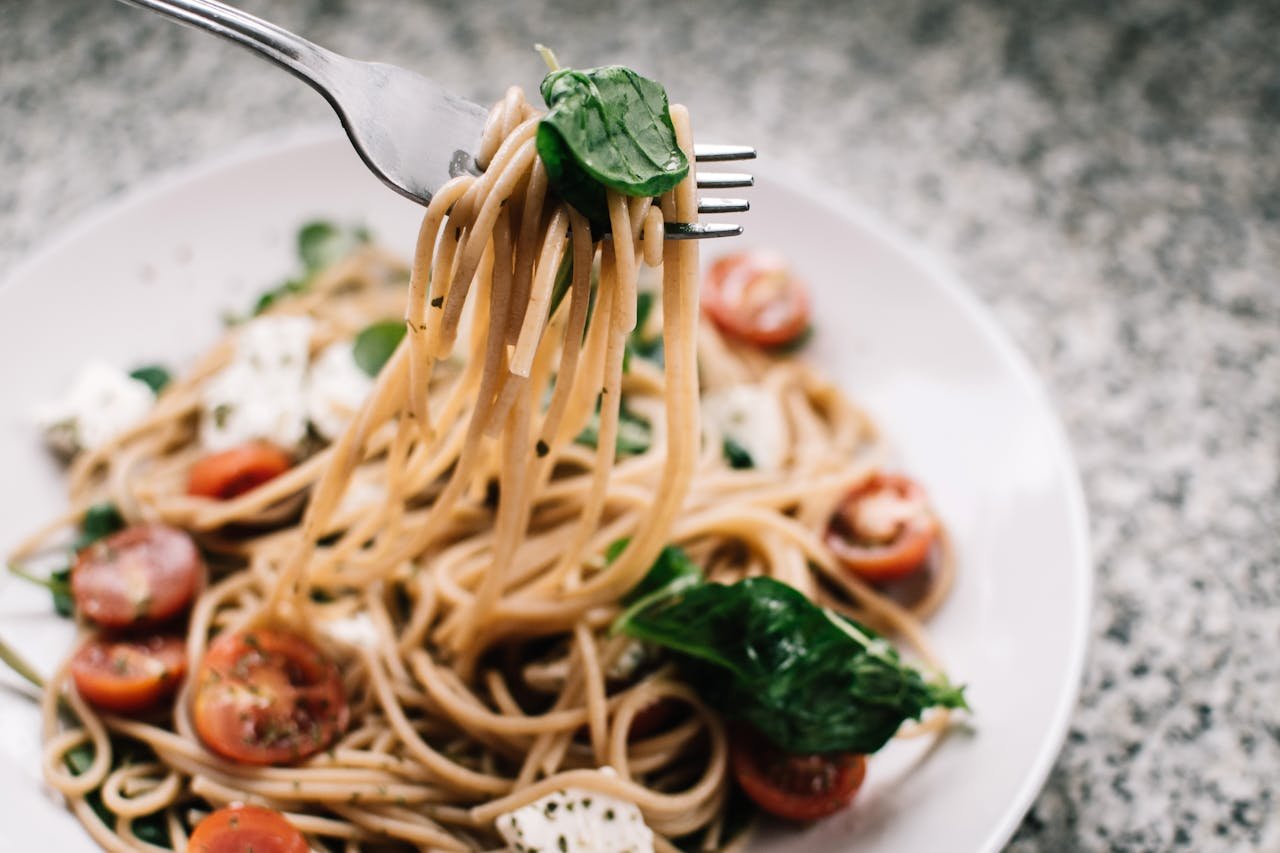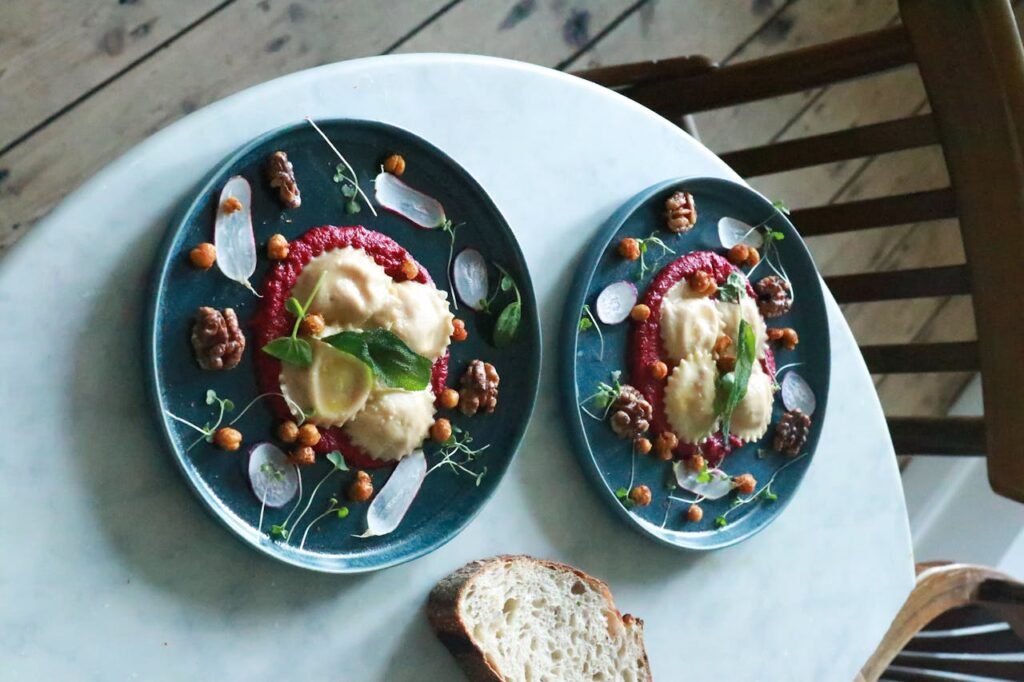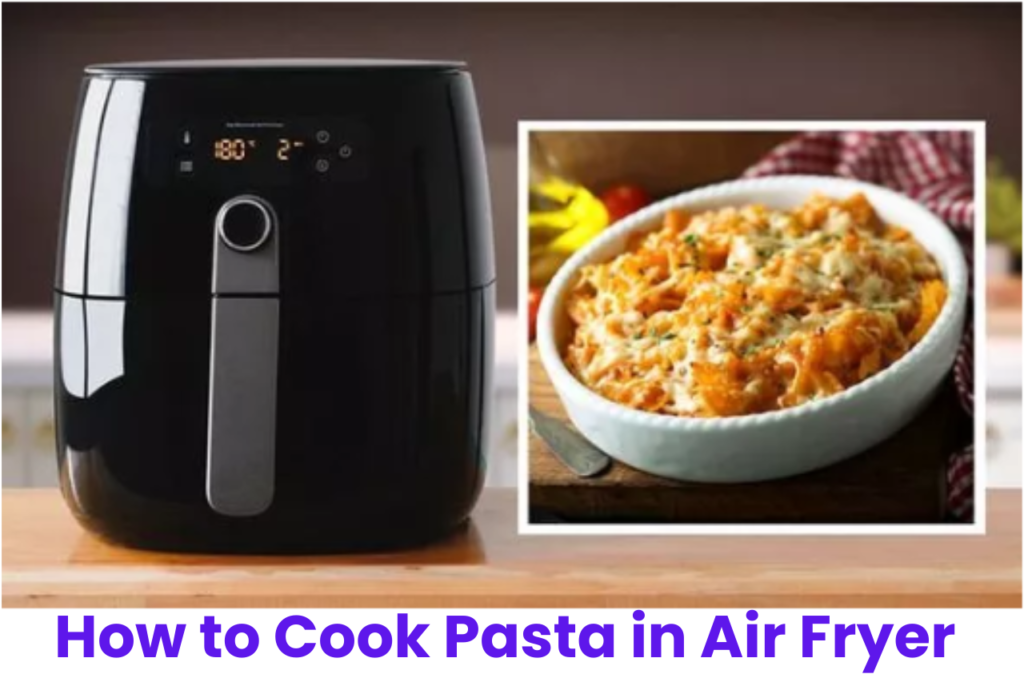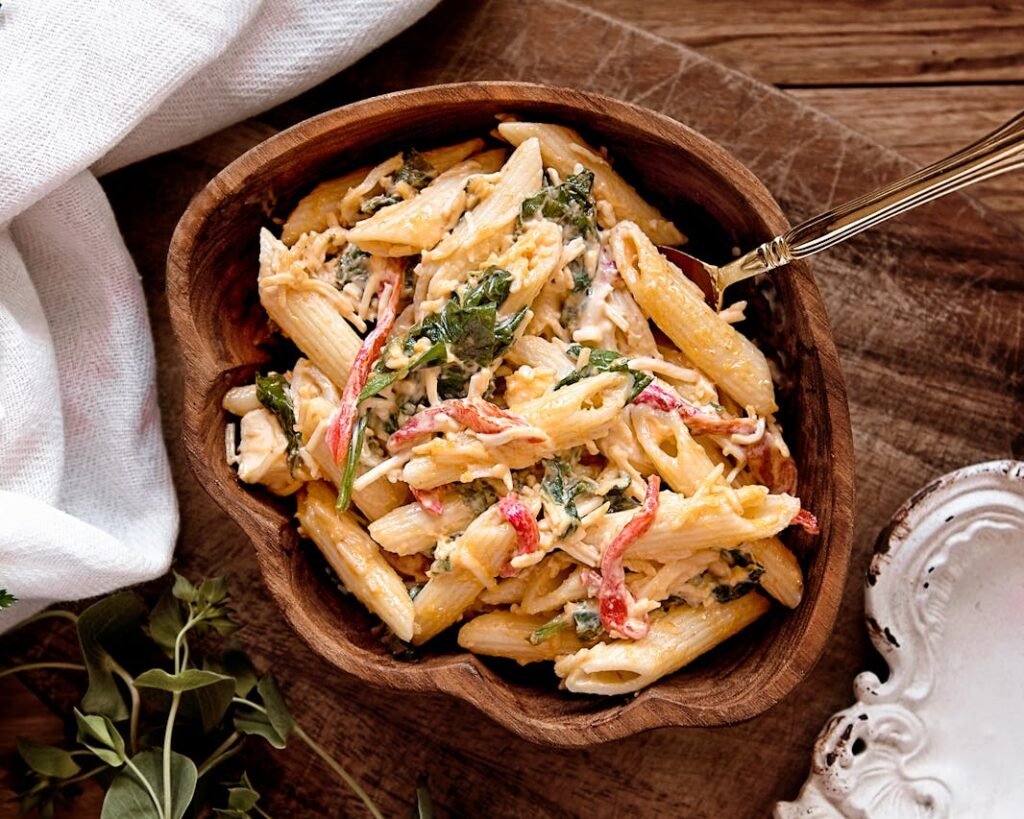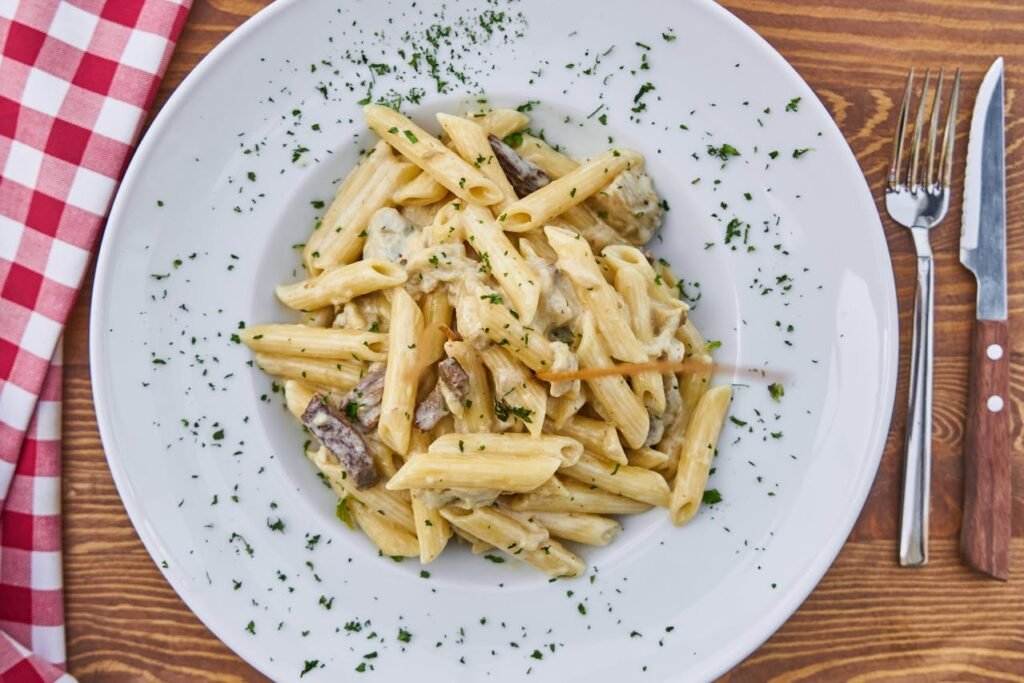Whole grain pasta has arisen as a famous decision among wellbeing cognizant people looking to integrate more supplement thick food varieties into their eating regimens. Not at all like conventional refined pasta, whole grain pasta offers a scope of medical advantages inferable from its higher fiber content, expanded supplement profile, and lower glycaemic file. However, to really see the value in the upsides of whole grain pasta, it’s fundamental to comprehend how to cook whole grain pasta appropriately to accomplish ideal taste and surface.
Understanding Whole Grain Pasta:
Whole grain pasta is crafted from flour that includes the entire grain kernel, retaining the natural bran, germ, and endosperm. This minimal processing ensures that the pasta retains higher fiber content, vitamins, minerals, and antioxidants compared to refined pasta. Whole grain assortments incorporate whole wheat, spelt, earthy colored rice, quinoa, from there, the sky is the limit. These options cater to various dietary preferences, including gluten-free alternatives.
Many individuals harbor misconceptions about whole grain pasta, assuming it lacks flavor or texture compared to traditional pasta. However, with the right cooking techniques and pairings, whole grain pasta can deliver a delightful culinary experience. It’s important to recognize that whole grain pasta offers a distinct nutty flavor and a slightly denser texture, contributing unique characteristics to dishes.
Embracing whole grain pasta is a step towards embracing a healthier lifestyle, promoting satiety, digestive health, and stable blood sugar levels. The healthful advantages of whole grain pasta, joined with its flexibility in cooking, settle on it an ideal decision for those looking for adjusted and nutritious dinners.
Preparation:
Prior to plunging into cooking whole grain pasta, accumulate the fundamental fixings and hardware:
- Whole grain pasta of decision (like spaghetti, penne, fusilli)
- Enormous pot for bubbling water
- Fit or ocean salt
- Discretionary: Olive oil for keeping pasta from staying
- Pairings: Select sauces, proteins, and vegetables to supplement the pasta dish
Picking the suitable pasta shape can improve the general eating experience. Long, twisted, or tubular shapes pair well with a variety of sauces, while shorter shapes are ideal for hearty dishes with chunky sauces or vegetables.
Cooking Process:
To cook whole grain pasta flawlessly, adhere to these bit by bit directions:
- Heat up an enormous pot of water (4-6 quarts for every pound of pasta) and add salt to improve the pasta’s flavor.
- Gently add the pasta to the boiling water, stirring to prevent clumping or sticking.
- Refer to the package instructions for cooking time but aim for an “al dente” texture, where the pasta retains a slight firmness.
- Test the pasta for doneness by tasting or cutting a piece; it should be tender yet firm.
- Reserve a cup of pasta water before draining the pasta in a colander to preserve its starch content.
- Avoid rinsing the pasta, as this removes the starch needed for sauce adherence.
Mastering the cooking process is key to unlocking the full potential of whole grain pasta, ensuring a delightful dining experience with every bite. Stay tuned for the next section on serving and enjoying whole grain pasta!
Serving and Enjoying:
Once you’ve mastered the art of cooking whole grain pasta, the next step is to elevate your dining experience by serving and enjoying this nutritious and flavorful dish.
Pairing with Sauces and Condiments:
Whole grain pasta serves as an excellent canvas for a variety of sauces and condiments, enhancing its flavor profile and creating a satisfying meal. Consider these delicious pairing options:
- Classic Marinara Sauce: A timeless choice featuring tomatoes, garlic, onions, and herbs. The tangy sweetness of marinara complements the nutty flavor of whole grain pasta.
- Creamy Alfredo Sauce: Indulge in a rich and velvety sauce made from butter, cream, and Parmesan cheese. Alfredo sauce adds a luxurious touch to whole grain pasta dishes.
- Pesto Sauce: Vibrant and aromatic, pesto sauce combines fresh basil, pine nuts, Parmesan cheese, and olive oil. Toss whole grain pasta with pesto for a burst of herbal freshness.
- Primavera Sauce: Celebrate seasonal vegetables with a colorful primavera sauce featuring sautéed bell peppers, zucchini, cherry tomatoes, and herbs. The vibrant flavors complement whole grain pasta beautifully.
Experiment with different sauce combinations to discover your favorite pairings with whole grain pasta. For a lighter option, toss pasta with a drizzle of extra virgin olive oil, fresh herbs, and a sprinkle of Parmesan cheese.
Adding Protein and Vegetables:
Enhance the nutritional value of whole grain pasta dishes by incorporating lean proteins and vegetables:
- Grilled Chicken or Shrimp: Add grilled or sautéed chicken breast or shrimp to pasta dishes for a protein boost.
- Roasted Vegetables: Roasted vegetables such as broccoli, bell peppers, cherry tomatoes, and asparagus bring vibrant colors and textures to whole grain pasta dishes.
- Beans and Legumes: Incorporate cannellini beans, chickpeas, or lentils for plant-based protein and fiber.
By combining whole grain pasta with protein-rich ingredients and colorful vegetables, you’ll create balanced and satisfying meals suitable for any occasion.
Garnishing and Serving:
Before serving, consider these garnishing options to elevate the presentation and flavor of whole grain pasta dishes:
- Fresh Herbs: Sprinkle chopped parsley, basil, or thyme over pasta for a burst of freshness.
- Grated Cheese: Grate Parmesan, Pecorino Romano, or Asiago cheese over hot pasta to add savory notes.
- Red Pepper Flakes: For a touch of heat, sprinkle red pepper flakes over pasta.
- Drizzle of Olive Oil: Finish pasta dishes with a drizzle of extra virgin olive oil for richness and depth of flavor.
Serve whole grain pasta in warmed bowls or plates, garnished with your preferred toppings, and enjoy alongside a fresh salad or crusty bread for a complete meal experience.
Health Benefits of Whole Grain Pasta:
Whole grain pasta offers a range of health benefits compared to traditional refined pasta, making it a valuable addition to a balanced diet.
Rich in Dietary Fiber:
One of the key advantages of whole grain pasta is its high fiber content. Unlike refined pasta, which is stripped of its fiber during processing, whole grain pasta retains the bran and germ, providing a significant amount of dietary fiber. Fiber is essential for digestive health, promoting regular bowel movements, and contributing to a feeling of fullness.
Nutrient-Dense:
Whole grain pasta is packed with essential nutrients, including vitamins, minerals, and antioxidants. It contains notable amounts of B vitamins, such as folate, thiamine, and niacin, which are important for energy metabolism and overall health. Additionally, whole grain pasta is a good source of minerals like iron, magnesium, and zinc, supporting various bodily functions.
Lower Glycemic Index:
Whole grain pasta has a lower glycemic index compared to refined pasta, meaning it causes a slower and more gradual rise in blood sugar levels. This can be beneficial for managing blood sugar and insulin levels, making whole grain pasta a suitable option for individuals with diabetes or those looking to stabilize their energy levels.
Heart Health Benefits:
Regular consumption of whole grain pasta may contribute to heart health. The fiber and antioxidants found in whole grains have been linked to a reduced risk of heart disease. Additionally, the magnesium and potassium content of whole grain pasta supports cardiovascular function and helps regulate blood pressure.
Weight Management:
Incorporating whole grain pasta into a balanced diet can aid in weight management. The fiber content promotes satiety, helping you feel fuller for longer periods and potentially reducing overall calorie intake. When combined with a variety of vegetables and lean proteins, whole grain pasta can be part of a satisfying and nutritious meal plan for weight loss or maintenance.
Antioxidant Properties:
Whole grain pasta contains antioxidants, including phenolic compounds and flavonoids, which help protect cells from oxidative stress and inflammation. These antioxidants contribute to overall health and may reduce the risk of chronic diseases.
By choosing whole grain pasta over refined varieties, you can enjoy these health benefits while savoring delicious and satisfying meals.
Tips for Cooking Perfect Whole Grain Pasta:
Cooking whole grain pasta requires a slightly different approach compared to regular pasta to achieve optimal texture and flavor. Follow these tips for cooking perfect whole grain pasta every time:
1. Use Ample Water:
Start by bringing a large pot of water to a rolling boil. Use approximately 4-6 quarts of water per pound of pasta. Whole grain pasta needs space to cook evenly and prevent sticking.
2. Add Salt to the Water:
Generously salt the boiling water before adding the pasta. Salt enhances the pasta’s flavor and helps season it from within. Aim for about 1-2 tablespoons of salt per gallon of water.
3. Don’t Overcook:
Whole grain pasta has a firmer texture than refined pasta and can quickly become mushy if overcooked. Follow the package instructions for cooking time but begin checking for doneness a couple of minutes earlier to avoid overcooking.
4. Stir Occasionally:
As soon as you add the pasta to the boiling water, stir gently to prevent sticking. Stirring also ensures that the pasta cooks evenly and doesn’t clump together.
5. Reserve Pasta Water:
Before draining the pasta, reserve a cup of the cooking water. The starchy pasta water can be used to adjust the consistency of sauces or dishes and helps them adhere better to the pasta.
6. Taste for Doneness:
Test the pasta a minute or two before the recommended cooking time ends. Whole grain pasta should be al dente—firm to the bite but not too soft or chewy.
7. Avoid Rinsing:
After draining the pasta in a colander, avoid rinsing it with water. Rinsing removes valuable starches that can help sauces cling to the pasta.
8. Serve Immediately:
Once cooked, promptly toss the pasta with your preferred sauce or ingredients and serve immediately. Whole grain pasta tends to absorb flavors well and pairs beautifully with a variety of sauces and toppings.
9. Consider Residual Cooking:
Keep in mind that whole grain pasta may continue cooking slightly even after draining, so it’s best to remove it from the heat source just before reaching the desired texture.
By following these tips, you can master the art of cooking whole grain pasta to perfection, ensuring a delightful culinary experience with every dish.
Popular Sauces and Toppings for Whole Grain Pasta:
Whole grain pasta pairs wonderfully with a variety of sauces and toppings that enhance its nutty flavor and hearty texture. Here are some popular options to consider:
1. Classic Marinara Sauce:
A classic marinara sauce made with ripe tomatoes, garlic, onions, and Italian herbs is a timeless choice for whole grain pasta. The acidity of the tomatoes balances well with the pasta’s earthy notes.
2. Creamy Alfredo Sauce:
For a richer and indulgent option, Alfredo sauce made with cream, butter, and Parmesan cheese is a luxurious pairing with whole grain pasta. Add sautéed mushrooms or grilled chicken for extra flavor.
3. Pesto Sauce:
Fresh basil pesto made with pine nuts, Parmesan cheese, garlic, and olive oil is a vibrant and aromatic choice for whole grain pasta. Toss the cooked pasta with pesto and cherry tomatoes for a burst of freshness.
4. Roasted Vegetable Medley:
Roasted vegetables such as bell peppers, zucchini, eggplant, and cherry tomatoes add sweetness and depth to whole grain pasta. Drizzle with balsamic glaze or sprinkle with feta cheese for extra flavor.
5. Lemon Garlic Shrimp:
Sautéed shrimp with garlic, lemon zest, and red pepper flakes create a zesty and satisfying topping for whole grain pasta. Finish with fresh parsley and a squeeze of lemon juice.
6. Spinach and White Bean Sauté:
Sautéed spinach and white beans seasoned with garlic, red pepper flakes, and lemon juice make a nutritious and flavorful sauce for whole grain pasta. Top with grated Parmesan cheese for added richness.
7. Ratatouille:
A traditional French stew of eggplant, zucchini, bell peppers, and tomatoes makes a delightful topping for whole grain pasta. The medley of flavors and textures adds depth to the dish.
8. Herbed Olive Oil and Cherry Tomatoes:
Toss whole grain pasta with extra-virgin olive oil infused with fresh herbs like basil, thyme, and oregano. Add halved cherry tomatoes and shaved Parmesan for a simple yet elegant dish.
9. Spicy Arrabbiata Sauce:
Arrabbiata sauce made with tomatoes, garlic, and red chili flakes adds a fiery kick to whole grain pasta. Garnish with fresh basil leaves and a drizzle of olive oil.
Experiment with these sauces and toppings to create delicious and satisfying whole grain pasta dishes that are sure to impress your family and guests. The versatility of whole grain pasta allows for endless creativity in the kitchen!
Health Benefits of Whole Grain Pasta:
Whole grain pasta offers several health benefits compared to traditional refined pasta. Here are some reasons why you should consider adding whole grain pasta to your diet:
1. Rich in Dietary Fiber:
Whole grain pasta contains higher amounts of dietary fiber compared to refined pasta. Fiber is essential for digestive health, promotes regular bowel movements, and helps maintain satiety, keeping you fuller for longer.
2. Nutrient-Dense:
Whole grain pasta retains more vitamins, minerals, and phytonutrients compared to refined pasta. It’s a good source of important nutrients like B vitamins (including folate), iron, magnesium, and zinc, which play key roles in overall health.
3. Lower Glycemic Index:
Whole grain pasta has a lower glycemic index (GI) compared to refined pasta, meaning it causes a slower and steadier increase in blood sugar levels. This can help prevent spikes and crashes in energy levels.
4. Supports Heart Health:
The fiber and nutrients in whole grain pasta contribute to heart health. Fiber helps lower cholesterol levels, and whole grains are associated with a reduced risk of heart disease and stroke.
5. Promotes Weight Management:
Due to its higher fiber content, whole grain pasta can aid in weight management by promoting fullness and reducing overall calorie intake. It’s a satisfying option for those watching their weight.
6. Enhances Gut Health:
The fiber in whole grain pasta acts as a prebiotic, promoting the growth of beneficial gut bacteria. A healthy gut microbiome is linked to improved digestion and immune function.
7. Antioxidant Properties:
Whole grain pasta contains antioxidants such as selenium and phenolic compounds, which help neutralize free radicals and reduce oxidative stress in the body.
8. May Reduce Chronic Disease Risk:
Regular consumption of whole grains, including whole grain pasta, is associated with a lower risk of chronic diseases such as type 2 diabetes, certain cancers, and metabolic syndrome.
9. Satisfying and Versatile:
Whole grain pasta has a hearty texture and nutty flavor that pairs well with a variety of sauces and ingredients, making it a versatile option for creating delicious and nutritious meals.
Incorporating whole grain pasta into your diet can contribute to overall health and well-being. It’s a wholesome alternative to refined pasta that offers a range of nutritional benefits, making it a smart choice for those seeking a balanced and nutritious diet.
How to Cook Whole Grain Pasta:
Cooking whole grain pasta requires attention to detail to achieve ideal texture and flavor. Follow these step-by-step instructions for cooking whole grain pasta to perfection:
1. Choose Quality Whole Grain Pasta:
Start by selecting high-quality whole grain pasta. Look for options made from 100% whole wheat or other whole grains like brown rice, quinoa, or spelt. Choose pasta shapes that suit your recipe, such as spaghetti, penne, fusilli, or farfalle.
2. Use Sufficient Water:
Bring a large pot of water to a rolling boil. Use ample water to ensure the pasta has enough space to cook evenly and doesn’t stick together. Aim for about 4-6 quarts of water per pound of pasta.
3. Add Salt to the Water:
Once the water reaches a boil, add a generous amount of salt (about 1-2 tablespoons per gallon of water). Salting the water enhances the pasta’s flavor and helps season it from within.
4. Cooking Time and Al Dente Texture:
Carefully follow the package instructions for cooking time, but aim to cook the pasta al dente, which means it should be firm to the bite with a slight chewiness. Whole grain pasta typically requires slightly longer cooking than refined pasta, usually around 10-12 minutes.
5. Stir Occasionally:
While the pasta cooks, stir it occasionally using a wooden spoon or pasta fork to prevent sticking and ensure even cooking.
6. Taste Test for Doneness:
About 1-2 minutes before the recommended cooking time is up, start testing the pasta for doneness. Remove a piece of pasta, allow it to cool slightly, and taste it. The pasta should be tender but still have a slight firmness at the center.
7. Reserve Pasta Water:
Before draining the pasta, reserve a cup of the cooking water. This starchy water is essential for adjusting the consistency of your sauce later.
8. Drain and Avoid Rinsing:
Once the pasta reaches the desired texture, drain it in a colander. Avoid rinsing the pasta with water, as this removes valuable starch that helps sauces adhere to the pasta.
9. Combine with Sauce:
Transfer the drained pasta directly to your saucepan or skillet containing your prepared sauce. Toss the pasta gently to coat it evenly with the sauce.
10. Use Reserved Pasta Water:
If the sauce seems too thick or dry, add a splash of the reserved pasta water to loosen it up. The starch in the water helps emulsify and thicken the sauce, creating a creamy texture.
11. Serve Immediately:
Once the pasta is well-coated with sauce, serve it immediately while hot. Garnish with freshly grated Parmesan cheese, chopped herbs, or a drizzle of olive oil if desired.
By following these steps, you’ll master the art of cooking whole grain pasta to achieve perfect al dente texture and delicious flavor every time. Experiment with different sauces, vegetables, and proteins to create satisfying and nutritious pasta dishes that everyone will enjoy.
Creative and Healthy Whole Grain Pasta Recipes:
Whole grain pasta opens up a world of possibilities for creating delicious and nutritious meals. Here are some inventive recipes to try:
1. Whole Grain Pasta Primavera:
Ingredients:
- Whole grain spaghetti
- Assorted fresh vegetables (e.g., bell peppers, zucchini, cherry tomatoes, broccoli)
- Olive oil
- Garlic, minced
- Fresh basil, chopped
- Lemon zest
- Grated Parmesan cheese (optional)
- Salt and pepper to taste
Instructions:
- Cook whole grain spaghetti according to package instructions until al dente. Reserve a cup of pasta water before draining.
- In a large skillet, heat olive oil over medium heat. Add minced garlic and sauté until fragrant.
- Add assorted vegetables to the skillet and cook until tender-crisp.
- Toss cooked pasta with the vegetables, adding a splash of reserved pasta water.
- Season with salt, pepper, chopped fresh basil, and lemon zest.
- Serve immediately with grated Parmesan cheese on top if desired.
2. Whole Grain Pasta Salad with Mediterranean Flavors:
Ingredients:
- Whole grain fusilli pasta
- Cucumber, diced
- Cherry tomatoes, halved
- Red onion, thinly sliced
- Kalamata olives, pitted and halved
- Crumbled feta cheese
- Fresh parsley, chopped
- Extra virgin olive oil
- Red wine vinegar
- Dried oregano
- Salt and pepper to taste
Instructions:
- Cook whole grain fusilli pasta until al dente. Drain and rinse under cold water to cool.
- In a large bowl, combine cooked pasta with diced cucumber, cherry tomatoes, red onion, and Kalamata olives.
- Drizzle extra virgin olive oil and red wine vinegar over the salad.
- Season with dried oregano, salt, and pepper. Toss well to combine.
- Garnish with crumbled feta cheese and chopped fresh parsley before serving.
3. Creamy Whole Grain Pasta Alfredo:
Ingredients:
- Whole grain fettuccine
- Butter
- Heavy cream
- Garlic, minced
- Grated Parmesan cheese
- Freshly ground black pepper
- Chopped fresh parsley for garnish
Instructions:
- Cook whole grain fettuccine according to package instructions.
- In a saucepan, melt butter over medium heat. Add minced garlic and sauté until fragrant.
- Pour in heavy cream and simmer until slightly thickened.
- Stir in grated Parmesan cheese, reserving some for garnish.
- Season with freshly ground black pepper.
- Toss cooked pasta with the creamy Alfredo sauce.
- Serve hot, garnished with chopped fresh parsley and additional Parmesan cheese.
4. Whole Grain Pasta with Roasted Vegetable Marinara:
Ingredients:
- Whole grain penne pasta
- Assorted vegetables (e.g., bell peppers, eggplant, zucchini, cherry tomatoes)
- Olive oil
- Salt and pepper
- Marinara sauce (homemade or store-bought)
- Fresh basil leaves, torn
- Grated Parmesan cheese (optional)
Instructions:
- Preheat the oven to 400°F (200°C).
- Toss assorted vegetables with olive oil, salt, and pepper on a baking sheet.
- Roast in the preheated oven for 20-25 minutes until vegetables are tender and caramelized.
- Cook whole grain penne pasta according to package instructions.
- In a large skillet, warm marinara sauce over low heat.
- Add roasted vegetables to the marinara sauce and simmer gently.
- Toss cooked pasta with the vegetable marinara sauce.
- Serve hot, garnished with torn fresh basil leaves and grated Parmesan cheese if desired.
5. Whole Grain Pasta with Lemon Garlic Shrimp:
Ingredients:
- Whole grain spaghetti
- Shrimp, peeled and deveined
- Olive oil
- Garlic, minced
- Red pepper flakes (optional)
- Lemon zest
- Fresh parsley, chopped
- Salt and pepper to taste
Instructions:
- Cook whole grain spaghetti until al dente. Reserve a cup of pasta water.
- In a large skillet, heat olive oil over medium-high heat.
- Add minced garlic and red pepper flakes (if using), sauté until garlic is fragrant.
- Add shrimp to the skillet and cook until pink and opaque.
- Toss cooked pasta with the shrimp, adding a splash of reserved pasta water.
- Season with lemon zest, chopped fresh parsley, salt, and pepper.
- Serve immediately.
These whole grain pasta recipes offer a range of flavors and ingredients that highlight the health benefits and versatility of whole grain pasta. Whether you’re craving a light Mediterranean-inspired salad or a comforting creamy Alfredo, these dishes are sure to satisfy. Experiment with different combinations of vegetables, proteins, and sauces to create your own wholesome pasta masterpieces. Enjoy the taste and nourishment of whole grain pasta in these delightful recipes!
Conclusion: How to Cook Whole Grain Pasta
In conclusion, cooking whole grain pasta can be a rewarding and flavorful experience, offering a variety of health benefits and culinary possibilities. By following simple cooking techniques and incorporating fresh ingredients, you can create delicious and nutritious meals that will delight your taste buds and nourish your body.
Whole grain pasta is a versatile ingredient that can be used in a wide range of recipes, from classic Italian dishes to creative and innovative creations. Its nutty flavor and hearty texture make it a perfect base for sauces, vegetables, proteins, and seasonings of all kinds.
Remember, the key to cooking perfect whole grain pasta lies in selecting high-quality pasta, using the right cooking techniques to achieve the desired texture, and pairing it with complementary ingredients that enhance its flavor and nutritional profile.
Whether you prefer a light pasta salad for lunch, a comforting bowl of creamy pasta for dinner, or a quick stir-fry with whole grain noodles, there are endless possibilities to explore with whole grain pasta. Experiment with different recipes, flavors, and cooking methods to discover your favorite ways to enjoy this wholesome and satisfying food.
So, next time you’re in the mood for pasta, reach for whole grain options and get creative in the kitchen. Cooking with whole grain pasta is not only delicious but also a nutritious way to enjoy one of life’s simple pleasures. Embrace the goodness of whole grains and savor every bite of your homemade whole grain pasta creations!
Unlock the potential of whole grain pasta in your kitchen and elevate your meals with this wholesome and flavorful ingredient. Whether you’re cooking for yourself, family, or friends, whole grain pasta dishes are sure to impress and satisfy.
Happy cooking!
Read More: How to Cook Red Lentil Pasta: A Comprehensive Guide of Cooking and Enjoying
FAQs
Whole grain pasta typically takes slightly longer to cook than regular pasta made from refined flour. Follow the cooking instructions on the package, but generally, whole grain pasta should be cooked for about 9-11 minutes in boiling water until al dente.
Yes, whole grain pasta can cook differently from refined pasta due to its higher fiber content. It may require a few minutes longer to achieve the desired texture. It’s essential to avoid overcooking whole grain pasta to prevent it from becoming mushy.
To cook whole grain pasta:Bring a large pot of salted water to a boil.
Add the whole grain pasta and stir to prevent sticking.
Cook the pasta according to the package instructions, usually around 9-11 minutes, until al dente.
Drain the pasta in a colander and toss with sauce or desired toppings.
Whole wheat pasta can have a firmer texture compared to refined pasta. To soften whole wheat pasta:Cook it in boiling water for the recommended time until it reaches the desired doneness.
Avoid overcooking, as this can cause the pasta to become mushy.
If you prefer a softer texture, you can cook whole wheat pasta for an additional minute or two, but be careful not to overcook it.

